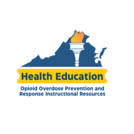
Discovery Education's Operation Prevention PSA
- Subject:
- Health Education
- Material Type:
- Visual Media
- Author:
- Jennifer Vedder
- Date Added:
- 12/20/2024
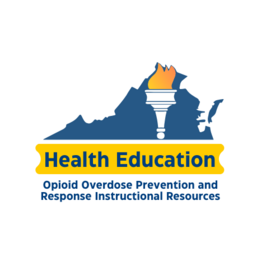

Discovery Education's Operation Prevention PSA
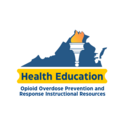
In September 2024, First Lady Suzanne Youngkin and First Lady of New Jersey Tammy Murphy, visited Bayside High School's Health Science Academy to bring awareness to the fentanyl crisis that is plaguing our country. Ashanti Kincannon, a health equity specialist with the Portsmouth Health Department, was also in attendance to share with the teens at Bayside High School how to use Narcan to reduce an opioid overdose.
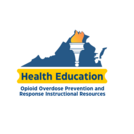
The 2024 General Assembly passed House Bill 134, which requires the Virginia Department of Education (VDOE), in consultation with such stakeholders and experts as it deems necessary or appropriate, to develop (i) age-appropriate and evidence-based education materials concerning the risks to health and safety that are posed by opioids, with a particular focus on prevention, identification of the signs of overdose, resources for supports, risks, and effects of addiction, and the risk of death that is posed by fentanyl and (ii) guidelines for school boards for incorporating the education materials developed into instructional programs for students enrolled in the local school division. The educational materials and guidelines in accordance with the act are required to be submitted to the Chairs of the House Committee on Education and the Senate Committee on Education and Health by November 1, 2024. In fulfillment of this requirement, the VDOE provides the Guidelines for Incorporating Opioid-Related Instruction into Classrooms. The document includes resources, guidelines, and instructional guides to assist educators in providing instruction on the risks to health and safety that are posed by opioids with a focus on prevention, the identification of signs of overdose, the risks and effects of addiction, the risks of death posed by fentanyl, and information on overdose reversal.
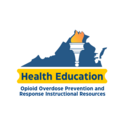
This video explains how opioids affect the brain by slowing down pain signals through opioid receptors, mimicking the brain's natural endorphins. Over time, as a person like Susan continues taking opioids, her brain becomes tolerant, requiring higher doses for relief, which can lead to addiction and a challenging cycle of dependence.
[National Geographic]
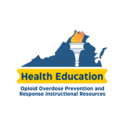
Over the past two decades, opioid overdose deaths have risen significantly First, prescription opioids were the main culprit. While prescription opioid deaths have recently decreased, they saw a temporary increase in 2020. Heroin overdoses became more common starting in 2011 but declined in 2016. Finally, synthetic opioids like fentanyl caused a dramatic rise in overdose deaths beginning in 2014. Most of this fentanyl is illegally produced. It's important to note that a single overdose can involve multiple types of opioids, so simply adding up the deaths from each category might overestimate the total number of deaths in a given year (NIHCM, 2024).[https://infogram.com/nihcm]
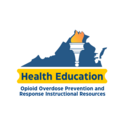
The Virginia Department of Health (VDH) monitors and reports data on drug overdose deaths. Data can be used to inform drug overdose prevention programs or policies.
The Virginia Department of Health data can be used as a springboard for eliciting student conversations on opioid awareness in different regions of Virginia. As the data indicates, all areas of Virginia are impacted by drug overdose, although some areas are more impacted than others. Students in classrooms may have personal experience with addiction that may be personal, a friend, or a family member. Teachers need to be sensitive to how this instruction is approached in their classrooms and may need support from a school counselor or a health care expert.
Spend a moment exploring this overdose dashboard. Select the type of drug you wish to review data on, and the county you'd like to review, and compare what you find to other counties in Virginia.
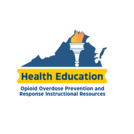
Virginia law (CHAPTER 451) requires each public secondary school that includes grades nine through 12 provide an opioid overdose prevention and reversal program of instruction at such grade level as the local school board deems appropriate. Each public secondary school is to adopt policies for the purpose of encouraging each student to complete such opioid overdose prevention and reversal program of instruction prior to graduating from high school.
The information in this resource is intended to support divisions in developing a program of instruction for grades nine through 12 on opioid overdose prevention and reversal and to serve as a resource for teachers responsible for implementing the program of instruction. Division programs of instruction are to include instruction in identifying the signs of a possible opioid overdose and training in the administration of an opioid antagonist for the reversal of a potentially life-threatening opioid overdose.
The First Lady of Virginia’s "It Only Takes One" campaign is raising awareness about the dangers of counterfeit drugs, which often contain deadly amounts of fentanyl. The campaign encourages open conversations and education about opioid addiction, empowering individuals to protect themselves and their loved ones. Through this initiative, Virginia is combating the opioid crisis in Virginia.
By understanding the risks, addictive qualities, and signs of an opioid overdose, teachers can empower themselves and their students to make informed decisions and take proactive steps to protect each other and their communities.
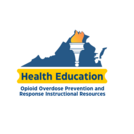
First Lady Suzanne S. Youngkin and Attorney General Jason Miyares announced the launch of the Fentanyl Awareness Pilot Program at the Fralin Biomedical Research Institute in Roanoke, VA. The first-of-its-kind, Virginia Department of Health awareness initiative is being implemented with support from the First Lady of Virginia and the Virginia Foundation for Healthy Youth (VFHY) in partnership with Attorney General Miyares’ ‘One Pill Can Kill’ campaign. The campaign strives to warn parents and caregivers that “It Only Takes One.” One bad decision. One counterfeit pill can cost a life. An average of five Virginians die from fentanyl poisoning every day, becoming the leading cause of unnatural death in the Commonwealth. Since 2019, deaths have more than doubled in the Roanoke region.